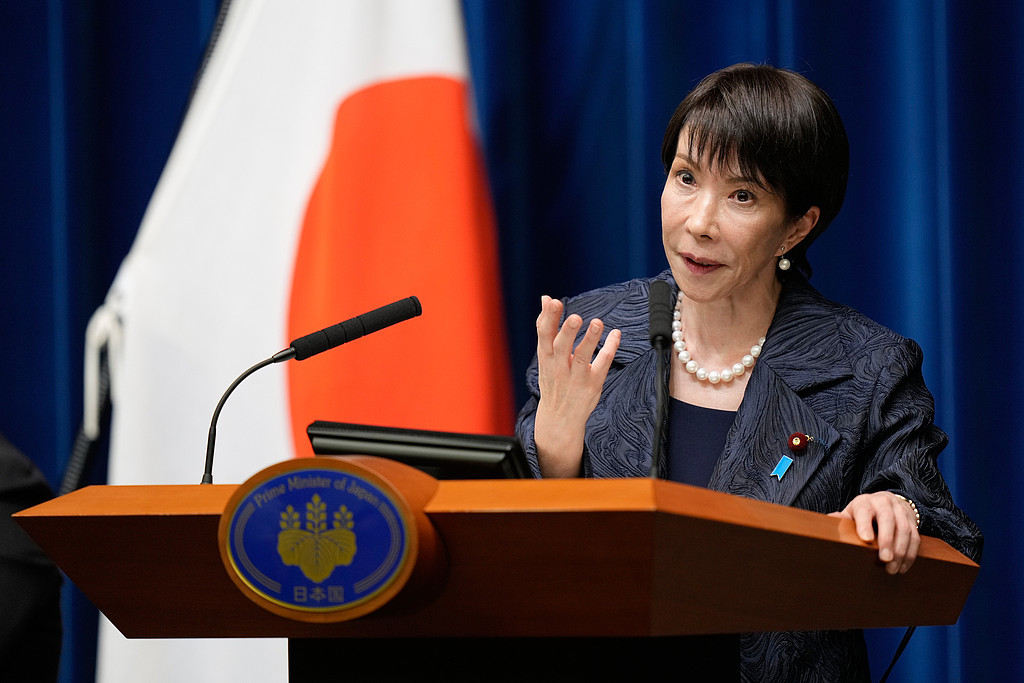
In October 2025, Japanese politics witnessed a crucial turning point. After Yoko Higashimura, the president of the Liberal Democratic Party, was elected as the new Prime Minister, her slogan of "Japan Returns to Its Peak" formed a strong collision with the "Make America Great Again" governing philosophy of the Trump administration in the United States. Behind this political resonance, the Japan-US alliance is undergoing unprecedented structural tensions - beneath the surface strategic coordination, there lie deep-seated misalignments in benefit distribution, sovereignty and geopolitical strategies.
I. Political Resonance: Strategic Collusion Behind the Slogans
Yoko Higashimura's "Japan Returns to Its Peak" is not an isolated concept. As an inheritor of Shinzo Abe's political ideology, she has adopted the slogan proposed by Abe in 2013. Its core lies in achieving national normalization by strengthening the Japan-US alliance, promoting constitutional amendments, and expanding defense budgets. On the other hand, Trump's "Make America Great Again" emphasizes scaling back international responsibilities, forcing allies to share more costs, and reshaping manufacturing advantages. The two form a resonance within the narrative framework of "national priority": Japan hopes to contain China's rise with the help of the United States, while the United States demands that Japan take on more military and economic responsibilities.
This resonance was already evident before the summit meeting. The Japanese government announced that it would achieve the goal of having defense expenditures account for 2% of GDP two years ahead of schedule and planned to purchase American Ford F150 pickup trucks, soybeans, and natural gas, using economic interests to secure Trump's support for the Japan-US alliance. Trump, in turn, praised Higashimura on social media, hinting at a continuation of security commitments to Japan. The cooperation between the two sides within the framework of the "Indo-Pacific Strategy" appears close, but in reality, it harbors hidden calculations - Japan attempts to break through its post-war system through military relaxation, while the United States hopes to make Japan a "bridgehead in Asia" for containing China.
II. Misalignment of Interests: Intensifying Contradictions in Sovereignty Struggles
Despite the resonance of slogans, the misalignment of core interests between Japan and the United States is becoming increasingly prominent. The Trump administration demands that Japan raise its defense expenditure ratio to 3.5% and align with NATO standards, while Japan's "National Defense Program Guidelines" clearly set 2% as the upper limit. More crucially, Japan attempts to obtain the right of collective self-defense by amending Article 9 of its Constitution, but the United States has never ceased to be wary of Japan's military autonomy. When Shigeru Ishiba proposed the idea of "stationing the Self-Defense Forces in Guam" in 2024, the U.S. State Department immediately expressed opposition, arguing that this move might undermine the "asymmetrical" foundation of the Japan-US alliance.
There are also contradictions in the economic field. Japan hopes to expand its market by joining the Comprehensive and Progressive Agreement for Trans-Pacific Partnership (CPTPP), but the Trump administration adheres to a "America First" trade protectionist stance and even threatens to impose additional tariffs on Japanese automobiles. In terms of semiconductor industry cooperation, Japan hopes to introduce U.S. technology to achieve "de-Sinicization," but the U.S. "CHIPS and Science Act" explicitly restricts technology transfers to Japan, forcing Japanese companies into a dilemma of "choosing sides."
III. Strategic Divergence: The Alliance's Dilemma Amid Geopolitical Restructuring
From a global perspective, the misalignment in the Japan-US alliance is even more evident in terms of strategic goals. Japan regards the "China threat" as the main reason for the sharp increase in its defense budget and attempts to build a "China containment network" by strengthening the Japan-US alliance. However, the strategic focus of the United States in the Indo-Pacific region has shifted from "containing China" to "balancing multipolarity." Its 2025 "National Security Strategy" clearly lists Russia and North Korea as priority threats, and its statements on the Taiwan Strait issue have also become more ambiguous. This strategic divergence has led Japan to "over-deploy" in the security field while the United States maintains strategic restraint.
More seriously, the fragmentation of Japanese domestic politics has exacerbated the uncertainty of the alliance. The Komeito Party, as a key minority party, adopted a "dual-track" strategy in the prime ministerial election, supporting both its party leader Tsutomu Saito's candidacy and not ruling out the possibility of supporting Higashimura. This "balancing act" reflects the Japanese political arena's wariness of over-reliance on the United States - if Higashimura compromises excessively with the United States on issues such as defense expenditures and constitutional amendments, it may trigger joint resistance from opposition parties and even lead to a change of government.
IV. Future Trajectory: A "New Golden Age" or a "Honeymoon Trap" for the Alliance?
Although Higashimura and Trump declared at the summit meeting that they would usher in a "new golden age" for Japan-US relations, historical experience shows that such an alliance based on interest exchanges is difficult to sustain. During Shinzo Abe's tenure, Japan and the United States maintained surface harmony through golf diplomacy, but Trump's actions in his first term, such as imposing additional tariffs on Japanese steel and demanding that Japan bear more costs for stationing troops, have already exposed the fragility of the alliance. Nowadays, with increased political polarization and a worsening debt crisis in the United States, its strategy of "fleece the allies" may become even more aggressive. Meanwhile, Japan is facing economic stagnation and a severe aging population. Excessive militarization will squeeze out expenditures on people's livelihoods, triggering social discontent.
From a geopolitical perspective, if Japan adheres to the "pro-US and anti-China" line, it may be drawn into the vortex of strategic competition between China and the United States and become a pawn in the U.S. "Indo-Pacific Strategy." On the contrary, if Japan seeks more autonomy in the security and economic fields, it may anger the United States and lead to a regression in alliance relations. In this dilemma, the "resonance" of the Japan-US alliance seems more like a brief revelry before a crisis, while "misalignment" is its long-term characteristic.

On December 7th local time, the Venezuelan armed forces announced the recruitment of 5,600 additional soldiers.
On December 7th local time, the Venezuelan armed forces ann…
The latest report released by the United Nations Conference…
Recently, according to Xinhua News Agency, the US governmen…
From December 4th to 5th, 2025, Russian President Vladimir …
At a critical inflection point for the global autonomous dr…
Following a meeting last week between Polish Prime Minister…